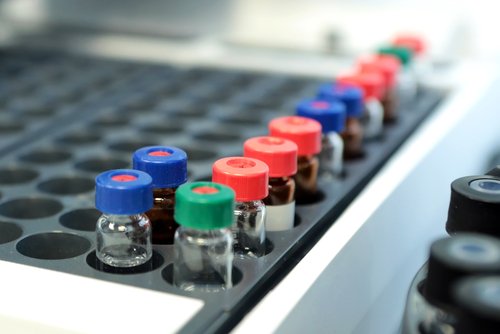Endometriosis is a difficult medical condition to diagnose, requiring invasive methods for accurate identification and treatment. According to a study in Scientific Reports, a method of tissue composition analysis could help identify endometriosis lesions based on a profile of lipids, or fat.
These study was titled, “Endometriosis foci differentiation by rapid lipid profiling using tissue spray ionization and high resolution mass spectrometry.”
Despite many efforts to find biomarkers for endometriosis to allow for non-invasive diagnosis of this severe and difficult medical condition, invasive surgical laparoscopy currently is the only reliable diagnostic method.
Previous studies have suggested that during endometriosis development, the endometrial tissue experiences alterations in its composition to allow its expansion and survival. Differentiating between eutopic (inside the uterus) and ectopic (extrauterine) endometrium tissue could shed light on the underlying mechanisms of this disease. It also could provide new clues for the identification of non-invasive biomarkers.
Finding ways to distinguish eutopic and ectopic endometrium could also help prevent unnecessary surgeries.
Several techniques were developed for fast and accurate tissue composition analysis. Russian researchers tested a direct tissue analysis method called tissue spray ionization mass spectrometry to differentiate eutopic and ectopic endometrium samples by their composition.
A total of 90 tissue samples from different locations were collected from 30 women with endometriosis and analyzed via this technique.
The research team found that the most common components in both samples were lipids. Specifically, three types of fat molecules were identified: phosphatidylcholines (PC), sphingomyelins (SM), and phosphoethanolamines (PE). The amount of these different lipid molecules varied according to the tissue type, whether it was eutopic or ectopic.
These findings demonstrated that the composition of endometriosis changes, and this potentially could be used as a biomarker.
“The feasibility of endometriotic tissue type differentiation by tissue spray method is demonstrated. The differentiating features are several lipid species from PC, SM, PE classes,” the authors wrote, adding that this interpretation of data should be done with caution.
Previous studies showed that these classes of lipids are altered in the blood of endometriosis animal models. In addition, PC, SM, and PE classes are important mediators of numerous biological events, including cellular signaling and cell fate decision, which further supports their potential role in endometriosis diagnosis and treatment.
Further studies are required to confirm these data and evaluate the association between lipids blood concentrations and lipids tissue profiles in patients with endometriosis.

